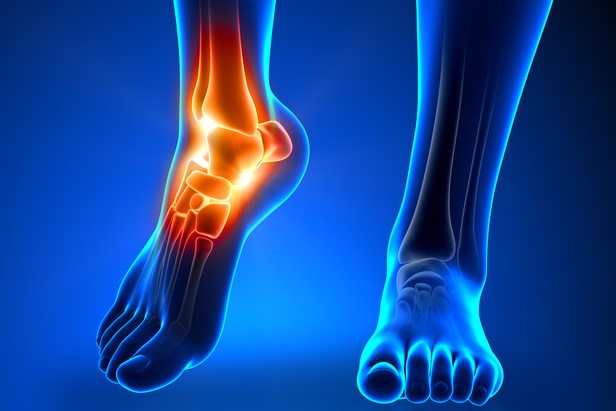
Ankle sprain: diagnosis and treatment
An ankle sprain is a pathology involving the loss of joint relationship between the two articular surfaces that make up the ankle
This loss is usually temporary and involves the talus, the bone of the foot that articulates with the leg.
In some cases, sprained ankles may be associated with ligament and articular cartilage damage
Symptoms
The symptoms following injury are characterised by acute pain and swelling of the ankle, often accompanied by a haematoma and significant functional limitation.
This can lead not only to lameness, but also to a condition in which the limb can no longer be supported.
Diagnosis and the different degrees of severity in ankle sprains
Sprained ankles can have different degrees of severity: mild, moderate and severe.
This is why a correct diagnosis is essential in order to be able to follow a targeted therapy.
First of all, it is necessary to proceed with an X-ray, which is a very useful diagnostic test to exclude possible fractures.
Subsequently, an ultrasound scan may be useful to study the soft parts, mainly the joint capsule, ligaments and tendons.
Only after some time, in the event of a confirmed pathology such as a major ligament lesion, is an indication given for an MRI scan.
Sprained ankle, what to do
Treating a classic sprained ankle, apart from situations in which there are fractures, is simple.
A sprained ankle requires first of all rest with the limb elevated, ice (cryotherapy) and possibly a bandage to contain swelling and pain.
It is less common nowadays to use crutches, at least in milder cases.
In the event of a sprain, of significant extent and manner of injury, you should immediately go to the emergency room for
- an examination by a specialist
- the prescription of diagnostic tests
- the most suitable treatment.
In cases of moderate and serious sprains, excluding bone involvement requiring the application of a plaster cast, in addition to the use of crutches, the most suitable therapy is an adhesive bandage or a bivalve plastic brace.
The latter makes it possible to resume walking at an early stage, without however compromising the correct ligamentous healing.
Physiotherapy in ankle sprains
At the same time, for more moderate and severe sprains, it is important to start what can be considered the main treatment of ankle sprains, i.e. physiokinesiotherapy.
The aim is threefold.
The first step is proprioceptive re-education aimed at providing rapid and adequate responses in destabilising situations, first in unloading and then in loading, through the use of rocker boards and cushions.
Having a different consistency and deformability, these objects make it possible to adapt the pace and stimulate the proprioceptive receptors when walking on uneven ground.
Strength recovery is then carried out, as good muscle trophism reduces the risk of relapsing injuries.
The most commonly used tools are the elastic band and the sponge ball, which allow the load to be dosed.
Only when the person is able to walk without limping and pain can full-load exercises be performed for both leg and thigh muscle strengthening.
Recovery time
The time required for full functional recovery varies from 3 to 5 weeks, depending on the severity of the injury.
It is very important to respect the correct rehabilitation and recovery time, without forcing and accelerating. The risk is to create the precondition for further sprains.
Read Also:
Emergency Live Even More…Live: Download The New Free App Of Your Newspaper For IOS And Android
Bone Cysts In Children, The First Sign May Be A ‘Pathological’ Fracture
Fracture Of The Wrist: How To Recognise And Treat It
Fractures Of The Growth Plate Or Epiphyseal Detachments: What They Are And How To Treat Them
The Spencer FXA Pro Ankle Immobilizer
The Difference Between A Sprain And A Strain: Comparing Symptoms, Diagnosis, And Treatment


